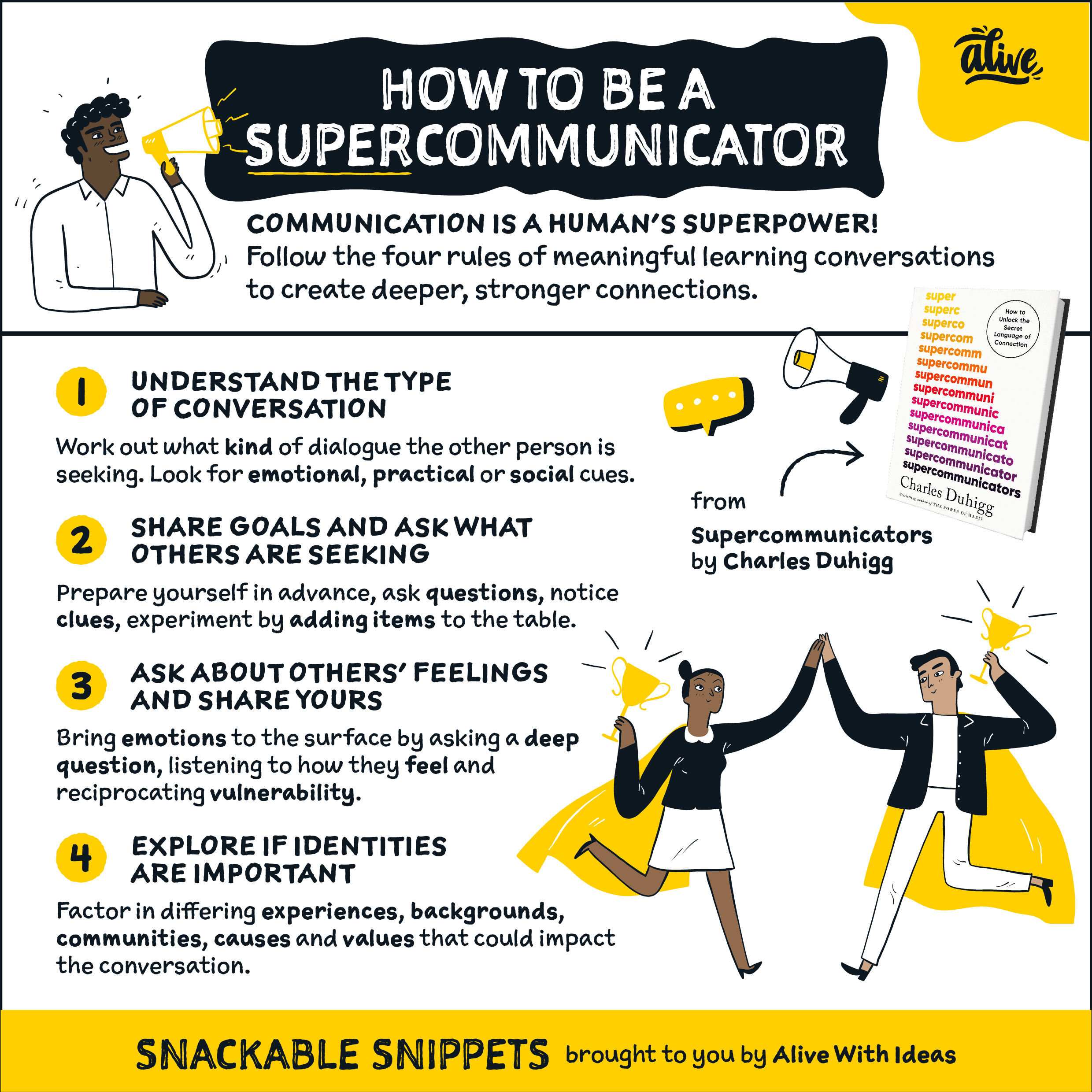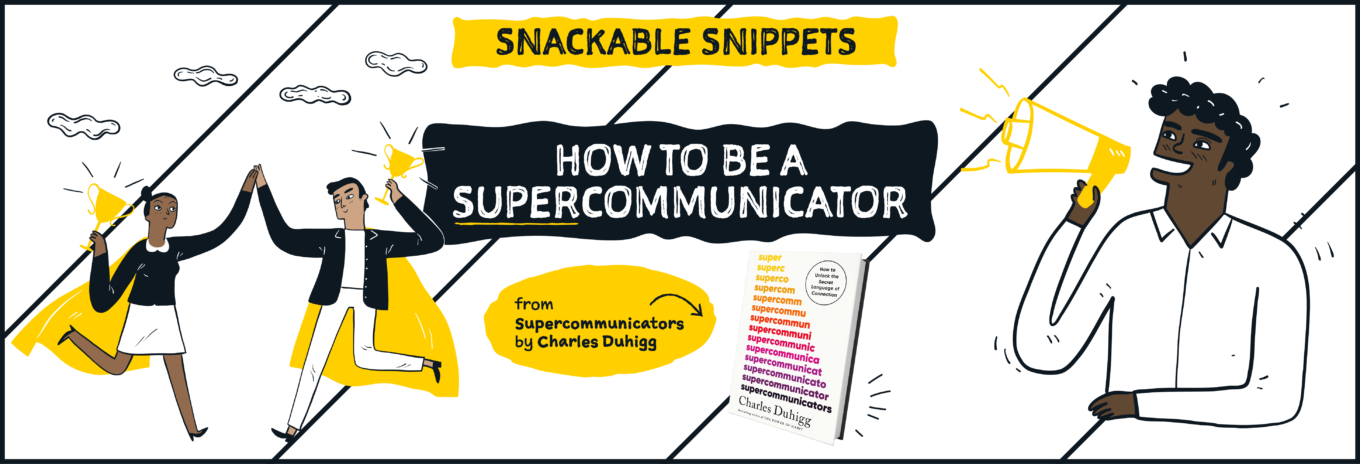Communication is a human’s superpower, but sometimes we lose touch with our natural instincts and need to revisit the basics of connection and understanding.
“When we have a real and meaningful conversation, it feels wonderful,” says Duhigg. “The reason for this is because we’ve evolved to want to have that connection. So, anyone who learns the rules of how to connect better and more easily, will be better at life.”
Supercommunicators are people who can expertly steer a conversation to a successful conclusion. They know how to put people at ease and make them feel like they’ve been heard, and they’re excellent connectors, facilitators and decision-guiders.
Want to be like this consistently and connect with almost anyone in any situation?
Charles Duhigg argues that you can, by practicing the four rules for a meaningful learning conversation.
In his book, Supercommunicators: how to unlock the secret language of connection, Duhigg explains the value of mastering a learning conversation where the goal is to understand what the other person is trying to tell you and help them understand what you’re thinking and feeling. You can walk away from a conversation still disagreeing with each other, but as long as you understand them, and they understand you, then the conversation has been a success.
In a learning conversation the goal is to understand what’s going on inside others’ heads and to share what’s happening within our own.
A learning conversation nudges us to pay better attention, listen more closely, speak more openly, and express what might otherwise go unsaid. It elicits alignment by convincing everyone that we all want to genuinely understand one another, and by revealing ways to connect.
In a meaningful learning conversation there’s vulnerability. If you engage in an emotional reciprocation and you’re a little vulnerable in return, I’m going to feel safe. I can be more vulnerable with you. That’s a meaningful conversation.

How to be a Supercommunicator
Communication is a human’s superpower!
Follow the four rules of meaningful learning conversations to create deeper, stronger connections.
- Understand the type of conversation
Work out what kind of dialogue the other person is seeking. Look for emotional, practical or social cues.
- Share goals and ask what others are seeking
Prepare yourself in advance, ask questions, notice clues, experiment by adding items to the table.
- Ask about others’ feelings and share yours
Bring emotions to the surface by asking a deep question, listening to how they feel and reciprocating vulnerability.
- Explore if identities are important
Factor in differing experiences, backgrounds, communities, causes and values that could impact the conversation.
From Supercommunicators by Charles Duhigg
https://www.charlesduhigg.com/supercommunicators
Snackable Snippets brought to you by Alive With Ideas

















